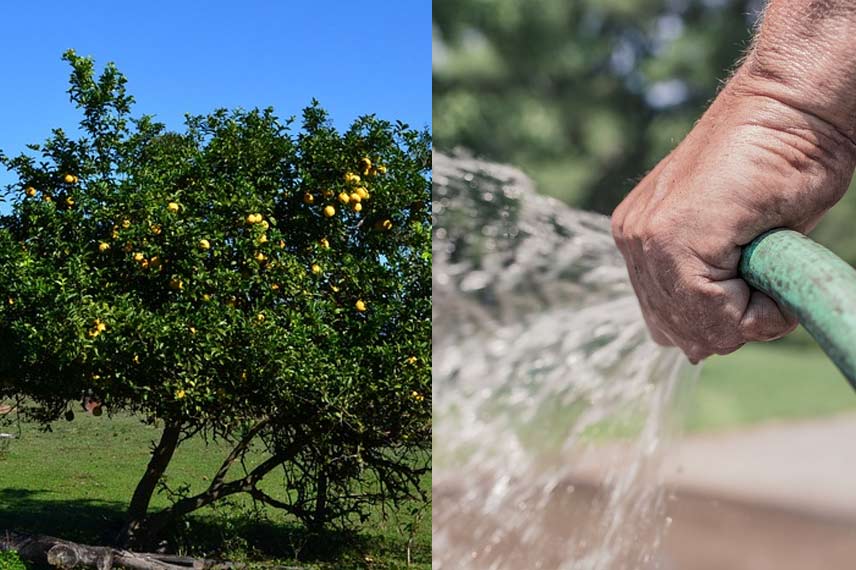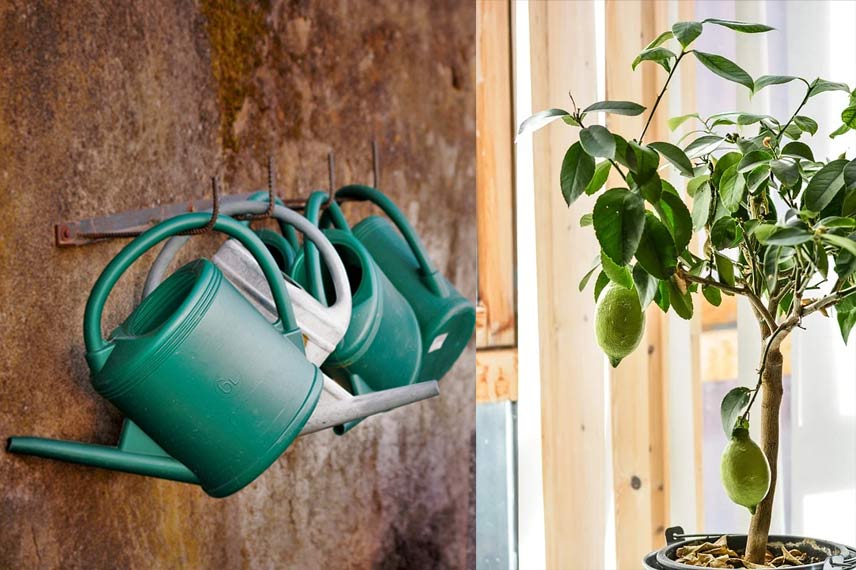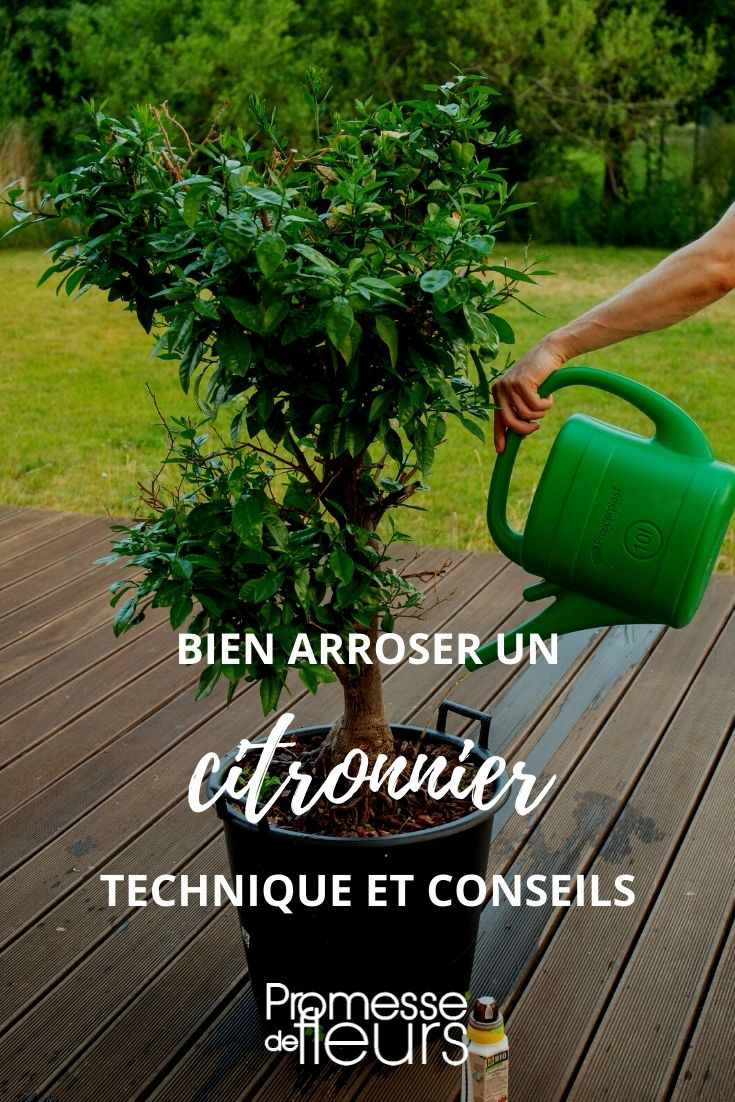The lemon tree, a true star among citrus fruits, is also relatively easy to grow. Proper watering management is essential to ensure its growth, as well as its flowering and fruiting. Without adequate water, your lemon harvests may be disappointingly sparse. This is especially true since lemon trees have significant water requirements, particularly when grown in pots, which is the case in most regions of France.
Frequency of watering depending on the season, type of water to use... Discover in detail how to properly water a lemon tree.
Understanding the Water Needs of a Lemon Tree
First, it's important to understand that lemon trees are very demanding when it comes to nutrients and water. While their care is simple, it must be regular and diligent. Three key factors are essential for their growth, health, and fruiting:
- rich fertiliser applications;
- watering perfectly suited to their needs;
- sunlight and warmth.
How to Tell if a Lemon Tree Needs Water
A lemon tree lacking water may show discomfort through yellowing leaves. However, don’t rely solely on this sign, as it can also indicate a nitrogen deficiency or overwatering.
On the other hand, clear signs of underwatering include:
- leaves pointing downward;
- very dry soil.
How to Tell if a Lemon Tree is Overwatered
Excessive watering can lead to root rot, a fatal condition for the plant.
As mentioned earlier, rapidly yellowing leaves can indicate both underwatering and overwatering.
Other signs that a lemon tree is suffering from overwatering include:
- leaves pointing upward;
- muddy soil;
- small pools of water forming in the ground for trees planted in the soil.

What Type of Water Should You Use for a Lemon Tree?
Most experts recommend using high-quality water for lemon trees. Rainwater is the most recommended. Lemon trees are highly sensitive to salt-rich water, and rainwater is also more acidic than tap water.
If you have no choice but to use tap water, take a few precautions to remove chlorine and make it purer and softer:
- let it sit for a few days;
- or filter it using a suitable jug (a stick of vegetable charcoal can also help here).
In either case, ensure the water is at room temperature to avoid thermal shock.
Watering a Lemon Tree Planted in the Ground
If your lemon tree is planted in the ground, note that the first year after planting is when the tree needs the most water. During this time, you should water it daily, but without overdoing it.
Once well-established, the tree will only need watering during extreme heat or prolonged drought. In these cases, water in the evening for best results.
WARNING
Avoid wetting the foliage of your lemon tree when watering. Like many plants, this fruit tree is susceptible to fungal diseases.
Note: Alongside watering, this citrus tree also benefits from several fertiliser applications throughout the year to support flowering, fruiting, and fruit growth.
Watering a Potted Lemon Tree
A potted lemon tree has much higher water needs than one planted in the ground. Since the roots cannot seek out what they need from the soil, and because potted soil dries out faster, watering must be more frequent. Additionally, water tends to drain straight to the bottom of the pot. Be careful to avoid water stagnation at the base of the pot or in its saucer.

Solenne’s tip: To prevent root rot, elevate the pot above its saucer. Place a layer of gravel or clay pebbles in the saucer and set the pot on top.
During the growing season, potted lemon trees should be watered very regularly—as soon as the soil surface dries out. In hot weather, daily watering may be necessary, regardless of the tree’s age. In winter, stop both watering and fertilising.
Note: While potted lemon trees require more water, they also need more frequent fertiliser applications, as the soil depletes faster. Add fertiliser to the soil once or twice a month.
Watering a Lemon Tree with a Drip System
The best irrigation system for citrus trees is drip irrigation. Commonly used in gardens, this method can also be applied to potted plants, with specific drip kits available for container gardening.
Benefits of drip irrigation for lemon trees:
- It provides continuous, targeted watering directly at the base of the plant, reducing evaporation loss.
- The slow drip allows the soil to absorb water gradually, minimising the risk of waterlogging and root rot.
- It improves nutrient absorption, particularly phosphorus and potassium, which are otherwise less mobile.
- For in-ground trees, the system ensures even water distribution around the root zone.
- It reduces weed growth, as the soil surface remains dry, preventing weed seed germination.
- Drip irrigation also lowers the risk of fungal diseases.



































Comments